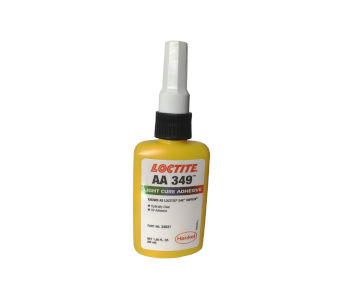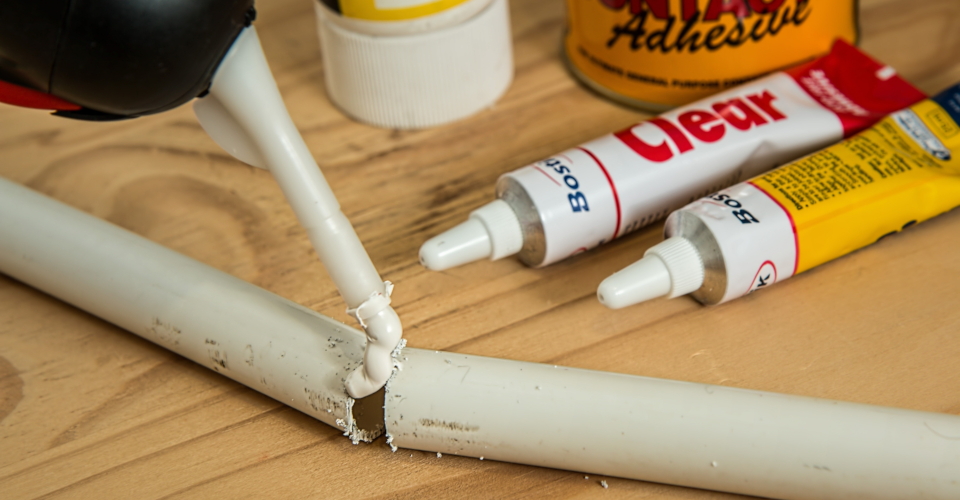What is UV Glue? Properties, Pros and Cons, Best Brands
Whether you’re doing DIY projects or doing work for a commercial or industrial firm, you’ve probably used a huge assortment of adhesives throughout your life. There are special adhesives for plastics, more robust ones for metals, and the generic “white glue” that we’ve all used for paper or wood.
In this article, we place the focus on an adhesive that’s a bit more unusual – UV glue. Used in a variety of commercial products, UV glue and its subsequent curing process offer a host of benefits both to creatives and commercial manufacturers.
What exactly is UV glue and what makes it unique? More importantly, where can you buy UV glue?
What is UV glue and how does it work?
In a nutshell, UV glue is a type of adhesive that requires a photochemical reaction for curing. Technically, UV glue is a polymer that relies on exposure to UV light to allow for cross-linking, thus creating a more solid structure at the molecular level. This is in contrast to other adhesives that rely on drying, a process that either takes a longer time or requires exposure to high temperatures. When exposed to UV light, the components of UV adhesives overcome the activation energy needed to trigger cross-linking via photon particles.
Different UV adhesives may come in different forms. The most common ones are epoxy-based, but acrylates are also fairly popular. There are also multi-component adhesives where the second component is a photochemical promoter, which can degrade into free radicals when exposed to UV light. These free radicals then significantly speed up the rate at which the UV glue cures.
UV curing has been heavily used in large-scale industries and commercial products such as food, cosmetics, automobiles, and medicine. The same chemistry behind UV adhesives has also been extended to UV curable inks. With a relatively quick curing process and the absence of solvents, UV curing has been deemed to be a very adaptable solution to high-speed and high-flexibility manufacturing needs.
Pros and cons of UV glue
While there are tons of use cases of UV glue, it’s also true that it’s not for everyone. For a creative professional who is just starting out, the initial investment for UV glue use might be a bit too high. However, the long list of benefits of UV glue cannot be denied, either. If you’re wondering if UV glue is for you, then are its strengths and corresponding limitations.
PROS:
Flexible workability
Through some creative chemistry, UV glue starts curing only when exposed to UV light. This means that it remains in liquid form while you work with it under visible light. With this characteristic, an application of UV glue can be modified or adjusted for a virtually indefinite period as long it has not been treated under a UV lamp. This is particularly useful for creatives or for those who apply UV glue with methods that are not perfectly precise.
The ability to delay the curing of UV glue makes it stand out from other solvent-based adhesives which start hardening as they are exposed to the atmosphere and epoxy-based adhesives that start curing as soon as the separate components are mixed together.
Quick curing
An application of UV glue can be cured in about three seconds. This almost-instant curing capability comes in handy for large-volume industrial applications, making it a technology that can be adapted to just about any existing process. A short curing time also lessens quality-related flaws as parts spend less time with wet or uncured adhesive.
The three-second rule may not always be the case, as the curing time will depend on how much adhesive needs to be cured. However, the curing step is also infinitely adjustable. If a manufacturer wishes to speed up curing, they can simply add more UV lamps or use lamps with higher UV intensity.
UV adhesives are often the go-to material when manufacturers are looking for the shortest curing time possible. Compared to adhesives that rely on drying, heating, or chemical treatment, the curing process for UV glue is much faster because of its simplicity.
Low temperature
The UV curing process does not rely on exposure to elevated temperatures, nor does it advantage from such a treatment. This makes it an excellent option for gluing together parts that are extremely sensitive to heat such as plastics, fabrics, or soft metals.
Since UV curing needs no exposure to heat, the manufacturer also saves on the associated power costs. This is advantageous for high-volume commercial manufacturers but still confers benefits to creative professionals. The UV lamp needed for the curing of UV glue consumes much less energy than a heating oven needed to cure a part of the same size.
Solvent-free
Solvent-based adhesives rely on the presence of the solvent to give it fluid-like properties before the solvent dissolves in the subsequent drying operation. This process takes longer and requires exposure of the part to elevated temperatures to speed up the drying process. Moreover, it also requires that the process be done in an area with good ventilation, as the solvents are flammable and typically toxic.
UV glues present no such dangers or complexities. During the curing process, the UV glue produces no such gaseous byproducts. This means that UV curing poses less of a hazard to workers and is an appropriate option when working in areas with poor ventilation.
CONS:
Tends to turn yellow after some time
UV glue and resins are often touted for their clear appearance when they cure, making them preferred materials for creative applications. However, there has also been a lot of user feedback stating that UV adhesives tend to turn yellow after a year or two. It’s easy to imagine this being problematic if you are using UV resin to create jewelry or if you applied UV adhesive to parts of a commercial product that are immediately visible.
To be clear, this may not be true for all UV glue products. If you need a part to stay clear for a long time, it would be prudent to check the manufacturer’s specs and user reviews.
Expensive
UV glue is not expensive to be inaccessible, but it’s typically more expensive than an equivalent volume of white glue or two-part epoxy. It is also often sold in very small tubes to somehow de-emphasize its high cost. For this reason, using UV glue for large projects becomes a question of practicality versus convenience.
There’s also a piece of the initial investment you need to consider before you can use UV glue – buying the UV lamp. UV lamps used to be much more expensive because they relied on the excitation of a mixture of mercury and noble gases, similar to how neon lights worked.
Nowadays, UV light has become much cheaper through the use of aluminum gallium nitride LEDs. These LEDs use much less energy, generate less heat, and don’t rely on a hazardous mercury gas. The wavelength of UV light generated from UV LEDs, but the technology has made it possible to manufacture handheld UV lights that cost less than $20.
Top recommendations for UV glue products
1. Bondic LED UV Liquid Plastic Welding Starter Kit

One of the most popular DIY UV glue kits, the Bondic starter kit is an all-in-one package that includes a canister of UV glue, a handheld applicator, and a compact UV LED light. The dried UV glue can also be sanded or painted over to obtain a smooth finish. In terms of sheer convenience, the Bonic UV starter kit is hard to beat.
The Bondic UV glue is a plastic welder, which means that it has the bulk to fill in gaps if necessary. Upon exposure to the UV LED, an application of the glue can be fully cured in just a few seconds. Thick applications of the Bondic UV glue may have to be done layer by layer so that all the material can be cured completely.
For more than $20 for the kit, the biggest complaint about the Bondic starter kit is that it includes too little of the UV glue. This may have been a consequence of the fact that the UV LED was thrown in with the kit. If you need refills, Bondic also sells UV glue cartridges.
2. DecorRom UV Crystal Clear Resin

For those who are into home-made crafts and jewelry, UV resin might prove to be a very interesting material. This UV resin from DecorRom was designed specifically for this purpose. DecorRom that crafts made from this resin will remain crystal clear even after several years and that the material is toxic-free.
The unlimited workability of UV resin is an extremely attractive trait for jewelry makers, as it means that they can shape and mold their craft without needing to rush. When they are satisfied with how the piece looks, exposing the resin to UV light for just a few minutes fully cures and hardens it.
This bottle of UV resin may seem very inexpensive but there are two things you’ll need to consider. The first is that it’s a very small 60-mL bottle. The second is that it doesn’t come with a UV lamp. You may need to fork over another $20 for handheld UV light, such as this flashlight from Esco Lite.
3. Loctite 34931 UV Adhesive

When all else fails, there’s always the ever-reliable Loctite brand to turn to. The 50-mL bottle may be quite small and pricey, but that’s the premium that such a brand fetches.
In terms of strength and durability, bonds with this UV adhesive are top-notch. It’s a versatile adhesive that can be used for glass, metals, wood, plastics, and other common materials. With an almost invisible bond, this UV glue is an excellent option for repairing clear pieces of glass or plastic.
Loctite states that curing this glue will require a UV light with a wavelength of 365 nm. This restricts the choices of UV lamps that you can use, which likely means that you’ll probably have to settle for a more expensive option. This further increases the price of using the Loctite UV glue. There have been user accounts that this glue has been cured with just exposure to the sun, but we imagine this will take much longer. If money isn’t an issue, this is a UV glue that comes with very high recommendations.
Final thoughts
UV adhesives offer an entirely different level of flexibility and versatility on account of their unlimited workability and fast curing. Despite not being incredibly popular, UV adhesives have made believers out of any DIY enthusiast or professional craftsman who has ever tried them. They aren’t the cheapest options but offer enough benefits to make them compelling either for DIY or industrial use.
When making the switch over to UV glues, don’t forget to consider that the UV light is a vital part of the process. If you’re planning on using UV glues long-term, then investing in a high-quality UV light with a wide range of frequencies and intensities may be a good idea.


Which uv glue do you think would be best to patch a hole in a home refrigerant line?